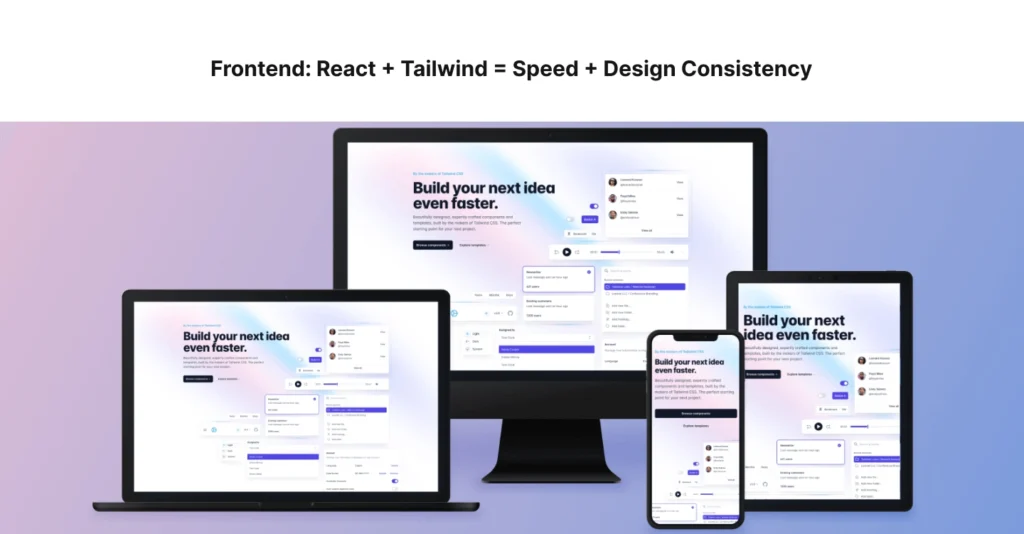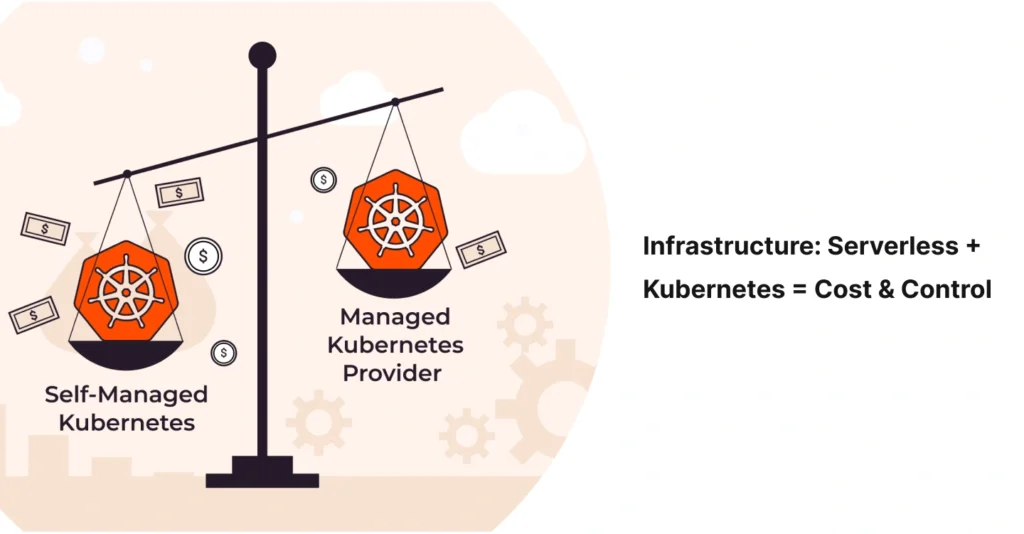
🚀 Introduction: Why Your Tech Stack Will Make or Break You in 2025
Let’s face it— Tech Stack Trends 2025 isn’t forgiving.
If you’re a startup founder or product leader, you already know the pressure. Faster delivery. Fewer bugs. Better UX. Lower costs. You don’t get a pass for “trying”—the market demands execution.
And a huge part of that execution? Your tech stack.
In fact, Choosing the right technologies is no longer just a developer’s job. It’s a smart business move.
Pick the wrong stack, and you could lose speed, money, users—and even funding.
At Tecoreng, we work with fast-scaling U.S.-based startups, and we’ve seen one thing clearly:
The right tech stack isn’t about what’s new—it’s about what works, at scale, in 2025. Let’s break down what’s hot this year—and what it’s time to leave behind.
🔥 What’s Hot Tech Stack Trends in 2025: Tech Worth Betting On
1. Backend Tech Stack Trends : Node.js & Go (Golang) Dominate the API Race

In the world of backend development, Node.js remains a powerhouse for startups thanks to its non-blocking I/O and massive ecosystem. At the same time, Go has emerged as a performance-driven alternative—particularly for high-load applications and microservices.
Why this combo is winning:
✅ Node.js is perfect for prototyping and quick iteration
✅ Go offers better performance and concurrency for scale.
✅ In addition, Both integrate beautifully with container-based and cloud-native architectures
If you’re building a product you hope will scale to millions of users, consider Go for your core services—and Node for flexibility and rapid features.
2. Frontend Tech Stack Trends: React + Tailwind = Speed + Design Consistency

Undoubtedly, React is still the #1 choice for building user interfaces—and for good reason. Paired with Tailwind CSS, developers get the best of both worlds: a modern, component-based frontend framework and a utility-first design system.
Why this stack is hot:
✅ Lightning-fast development cycles
✅ Easily reusable components = fewer bugs
✅ Tailwind helps enforce visual consistency without bloated design files
✅ Large community = fast problem-solving
We’ve seen teams reduce UI development time by 30–40% after moving to this setup.
3. Infrastructure Tech Stack Trends: Serverless + Kubernetes = Cost & Control

In the cloud infra world, the trend is clear: hybrid wins.
Serverless functions (like AWS Lambda and Google Cloud Functions) are ideal for event-driven tasks, background jobs, and workflows. Meanwhile, Kubernetes is still the backbone of scalable, containerized workloads.
Why combine them?
✅ Serverless = lower costs for unpredictable traffic
✅ Kubernetes = full control for stateful apps and microservices
✅ Both support autoscaling and are cloud-native
2025 trend: teams are choosing Serverless for flexibility and Kubernetes for resilience—not one or the other.
4. DevOps & CI/CD: GitHub Actions, Terraform, ArgoCD

DevOps is no longer optional. It powers fast and secure software releases.
In 2025, the winning combo we’re seeing across teams is
✅ For example, GitHub Actions is used for CI/CD pipelines
✅ Terraform for infrastructure as code
✅ ArgoCD for GitOps-style deployment
What this setup delivers:
✅ Instant rollback & version control
✅ Infrastructure that can be recreated from code
✅ Zero-downtime deployments
✅ Developers and ops working as one team
We’ve helped teams cut deployment time from hours to minutes with this trio. It’s efficient, scalable, and built for modern teams.
❌ What to Avoid in 2025: Tech Stack Trends Time-Wasters and Tech Debt
Now, let’s talk about what’s dragging teams down. Some of these were great in 2018—but in 2025, they’re liabilities.
1. Monolithic Architectures

Yes, Monoliths are easier to start with. However, if you’re planning to scale, they become a nightmare.
Why you should avoid monoliths:
❌ Slower deployment cycles
❌ Impossible to isolate features or failures
❌ One change risks breaking the entire system
❌ Limits team autonomy and productivity
We’ve seen growing startups hit a wall because they couldn’t scale their monolith without a massive re-architecture.
2. JQuery-Based Fronts

Are you still stuck with jQuery? That’s like trying to stream Netflix with a dial-up connection. It’s simply not meant for today’s dynamic mobile-first UIs.
Problems with jQuery:
❌ Difficult to manage complex UI states
❌ Not component-friendly
❌ Poor maintainability
❌ Bad for performance and SEO
Modern frameworks like React, Vue, or Svelte offer the speed and scalability you need.
3. Hardcoded Configs & Manual Deployments

This one is a silent killer. Teams are still editing .env files or pushing from laptops—yes, it still happens!
Why this is dangerous:
❌ Human error = system failure
❌ Zero visibility or repeatability
❌ Can’t scale across teams or environments
❌ Security risks (especially for secrets)
If you’re not using secrets managers, config-as-code, and automated deployment workflows, you’re putting your product at risk.
🌱 Bonus Tip: Tech Stack ≠ Hype Stack

Just because a tool is trending doesn’t mean it’s right for you. That’s why, The smartest companies in 2025 are stacking strategically—based on:
✅ Team skill sets
✅ Product goals
✅ Budget and time constraints
✅ Future scalability
Sometimes, the best stack is not the most “modern” but the one your team can ship with confidently.
🎯 Final Thoughts: Choose a Stack That Grows With You
Your tech stack isn’t just tools—it’s the base of your product.
In summary, Choose the right one, and you’ll grow faster, ship better, and keep users happy.
At Tecoreng, we help startups audit their current stacks and design systems that don’t just work today but are built for the next 5 years of growth.
👉 Want a free tech stack consultation or any custom software development ?
We’d love to help.





